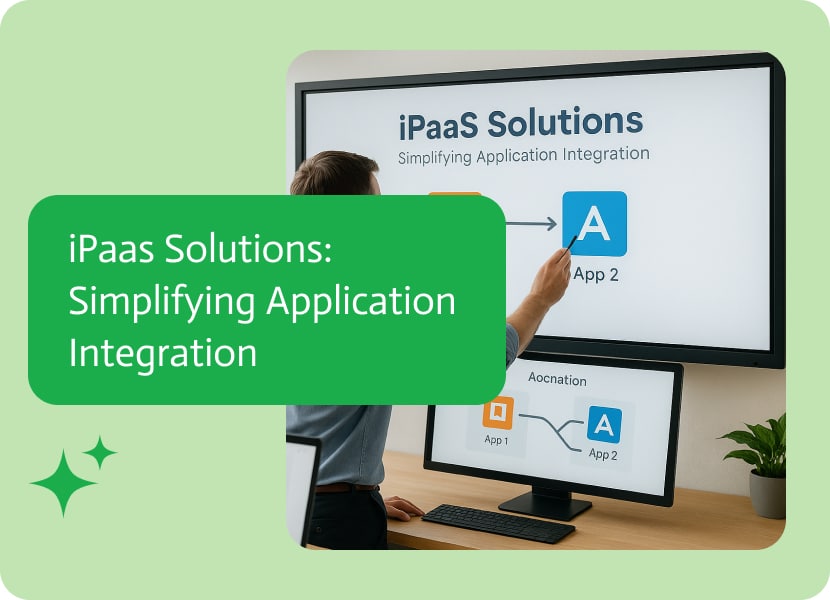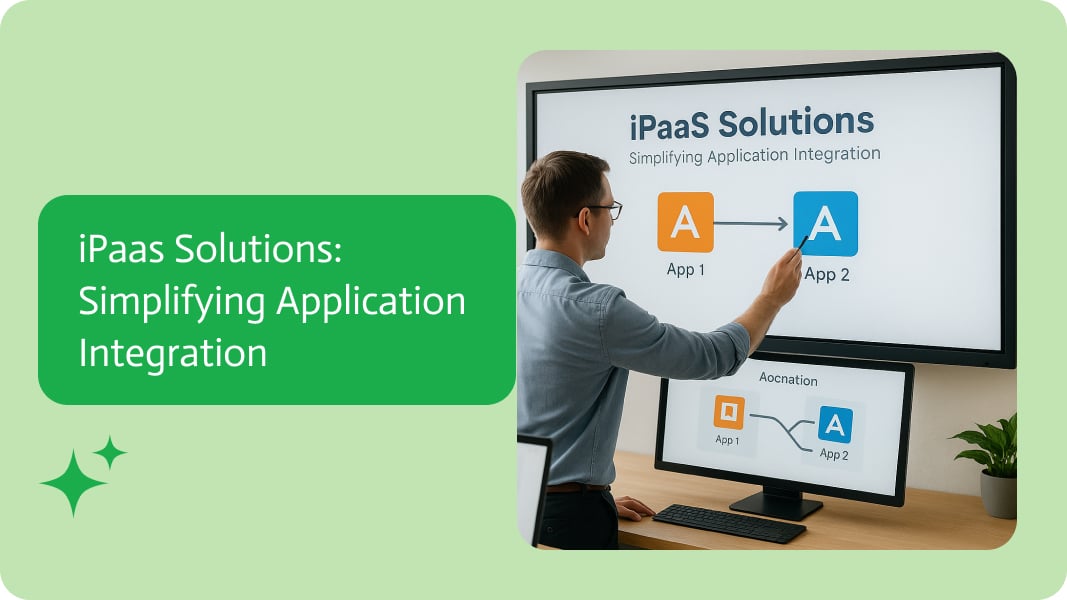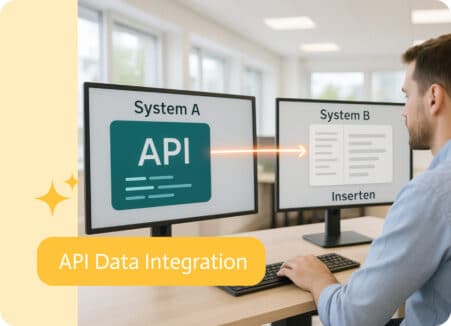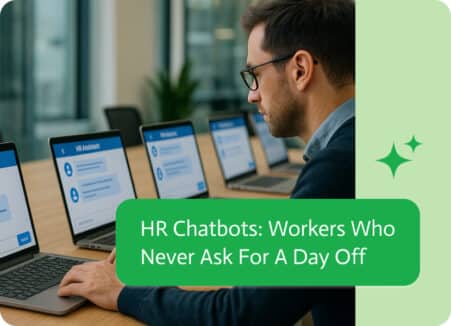

iPaas Solutions: Simplifying Application Integration
iPaaS, or Integration Platform as a Service, is a way to link different apps, data, processes, and systems using cloud-based software, like the brain that provides communication and data sharing between different software within your business, whether they’re located on-site, in the cloud, or a mix of both.
What is iPaaS?
The iPaaS market is expanding quickly, and experts predict growth from around $9.57 billion in 2024 to over $132 billion by 2033. A big reason for this is the addition of artificial intelligence and the expansion of AI-driven iPaaS platforms. These platforms use natural language processing, which allows users to explain what integrations they need, either by voice or typing, and in a variety of languages. The AI then turns these explanations into automated workflows, making integrations more accessible through simple interfaces and AI. It also allows business users to do more themselves, reducing the need for IT teams for everyday tasks.
iPaaS Solutions Benefits at a Glance
- Offering pre-built connectors: These are readymade links that allow an iPaaS to interact with popular apps and data sources (like Salesforce, SAP, Microsoft Dynamics 365, AWS, Google Cloud).
- Using APIs: iPaaS links systems using APIs, which let different software talk to each other.
- Providing simple drag-and-drop interfaces: Many iPaaS solutions have easy-to-use, visual tools that allow people without technical skills to create integration workflows without needing to code.
- Mapping and changing data:iPaaS helps you organize data as it goes between systems, which makes sure things are compatible and consistent.
- Orchestrating workflows: iPaaS platforms can handle processes and logic, which automates complicated tasks.
- Centralizing management and monitoring: iPaaS platforms offer dashboards and tools to see how things are running, find problems, and handle all integrations from one spot.
Why is iPaaS Important?
In the past, integrating systems often meant custom coding, expensive middleware, or older Enterprise Service Bus (ESB) solutions. These methods took time, were costly to maintain, and weren’t adaptable enough for fast-changing businesses, not to mention managing all the information gaps popping up from nowhere, disrupting smooth operations. That’s where Integration Platform as a Service (iPaaS) solutions help.
iPaaS solutions have many uses for business:
Linking apps like CRM, ERP, or any other system to keep data consistent and workflows unified. For example, keeping customer data in sync between a marketing platform and a sales CRM.
- Making sure data stays up-to-date across systems in real time which is important, especially for accurate reports and efficient operations.
- Moving data from older systems to new cloud platforms, or combining data from different places into a central data warehouse.
- Automating tasks like employee onboarding, order processing, credit applications, or lead-to-cash cycles.
- Connecting systems with business partners, suppliers, and customers for smooth data exchange and supply chain management.
- Connecting IoT devices to business systems to gather and analyze real-time data for insights.
- Helping design, publish, secure, and watch over APIs that allow systems to interact with applications and data.
How iPaaS Differs
Custom Coding:
While it can be flexible, custom coding needs a lot of resources, can take ridiculous amounts of time, is hard to maintain, and doesn’t scale well. iPaaS, on the other hand, offers a simpler, more organized way.
Enterprise Service Bus (ESB):
ESBs are usually on-site solutions used for integrating internal systems. They can be strong but also hard to implement and maintain and not as quick to adapt as iPaaS, especially when integrating with cloud apps.
ETL (Extract, Transform, Load):
ETL focuses on taking data from sources, transforming it, and loading it into a system (like a data warehouse). iPaaS can do ETL, but it does a whole lot more, including application integration, workflow orchestration, and API management.
iPaaS has gone from a niche solution to a key part of business today. Businesses are facing challenges and iPaaS is addressing them.
Too Many Apps and Data Silos
SaaS Growth:
Businesses are using more Software-as-a-Service (SaaS) apps for everything – CRM, ERP, marketing, HR, finance, project management, etc. While each one has features, they often don’t work together.
On-Site vs. Cloud:
Businesses still depend on systems physically located at the company while also using cloud apps. This makes integration difficult.
Data Silos:
Without integration, data is scattered across systems, creating data silos. This means customer info might be in the CRM, order info in the ERP, and marketing info in another platform. This prevents a clear business view.
iPaaS connects all these apps, whether in the cloud, on-site, or a mix of both. It breaks down data silos to ensure data moves consistently across systems.
Get on The iPaaS Train
Business changes rapidly. Companies need to adopt new tech, come up with new services, and adapt to market changes to stay ahead. This digital shifting isn’t just about new tools; it’s about using tech to create new value, which requires good connectivity and automation.
Traditional integration (like custom coding or ESBs) is slow, expensive, and needs IT staff. This leads to delays, hurting a business’s ability to innovate quickly. iPaaS, with its simple interfaces and pre-built connectors, speeds up integration, allowing businesses to link new apps and automate tasks efficiently, enabling faster time-to-market.
Efficiency Through Automation
- Manual Tasks: Many business tasks involve manual data entry or moving info between systems. These take time, are prone to errors, and are costly.
- Complex Workflows: Many business tasks involve different departments and apps. Automating these tasks is key for efficiency and accuracy.
iPaaS lets businesses automate tasks across apps. For example, when a new lead enters a CRM, iPaaS can create a task, send a notification to the sales team, and update a marketing platform. This reduces manual work and errors, freeing up employees.
Real-Time Data for Decision-Making
- Outdated Info: When data isn’t synchronized in real time, decision-makers often use old info, which can lead to mistakes.
- Analytics and BI: To get insights from data, it needs to be consolidated for business intelligence (BI) tools and analytics platforms.
iPaaS helps synchronize data across systems. This makes sure everyone has access to current info, enabling better decisions.
Better Customer and Employee Experience
- Consistent Experience: Customers expect a consistent experience across websites, apps, social media, and call centers. This needs systems that show the customer journey.
- Employee Time: Employees spend time switching between apps and manually moving data, which leads to frustration and reduced time.
By connecting customer-facing systems with operations for employees, it simplifies tasks and gives them the info they need, leading to higher satisfaction and efficiency.
Security and Governance
Separate systems and manual integrations increase the chance of security risks, which is exactly why businesses must follow data privacy regulations. Ensuring data handling across systems is difficult, and iPaaS providers offer relevant security features and governance. This helps businesses protect data, manage access, and follow compliance rules.
In short, iPaaS is needed for businesses today because it provides the connectivity needed for change. Here’s how they do it:
- Break down data silos.
- Accelerated change.
- Automated tasks.
- Enable decisions using real-time data.
- Improved customer and employee sentiment.
- Strengthened security.
Noca’s Role in iPaaS Solutions
Without iPaaS, businesses can get bogged down by integrations, hurting their ability to stay competitive. Noca aims to be a leading iPaaS provider, with a focus on AI and simple interfaces. Here’s what makes Noca stand out:
AI Interface
Unlike iPaaS platforms that might need technical skills, you can simply describe what you need. The AI then understands and creates the workflows. For example, you could type Connect my Salesforce leads with Mailchimp and send a welcome email, and Noca would make the workflows.
Simple Platform Smart Automation
They focus on drag-and-drop functionality and visual tools that let users manage integrations without coding. By using AI, it automates tasks and suggests workflows. It gets smarter from user actions to give recommendations, improving efficiency.
Scalability & Central Management
Noca.ai is relatively cheaper compared to competitors, making it good for startups and without sacrificing features. Like other iPaaS solutions, Noca.ai can handle more data as businesses expand, as well as offer connectors for apps like Salesforce, SAP, Shopify, Microsoft Dynamics, speeding up integration. The platform has tools for watching over integrations from a dashboard, emphasizing how its iPaaS helps businesses with better data, efficiency, customer experience, and faster time-to-market.
Conclusion
The business world is changing, requiring flexibility and connection. iPaaS solutions are crucial. By acting as the for your system, iPaaS breaks down data issues, automates workflows, and provides the real-time insights needed for decisions. It empowers to quickly integrate applications, operations, improve customer and employee experiences, and stay competitive. As businesses deal with a world, using an iPaaS solution is a basic requirement for change. The future of business is connected, and iPaaS is the key.


